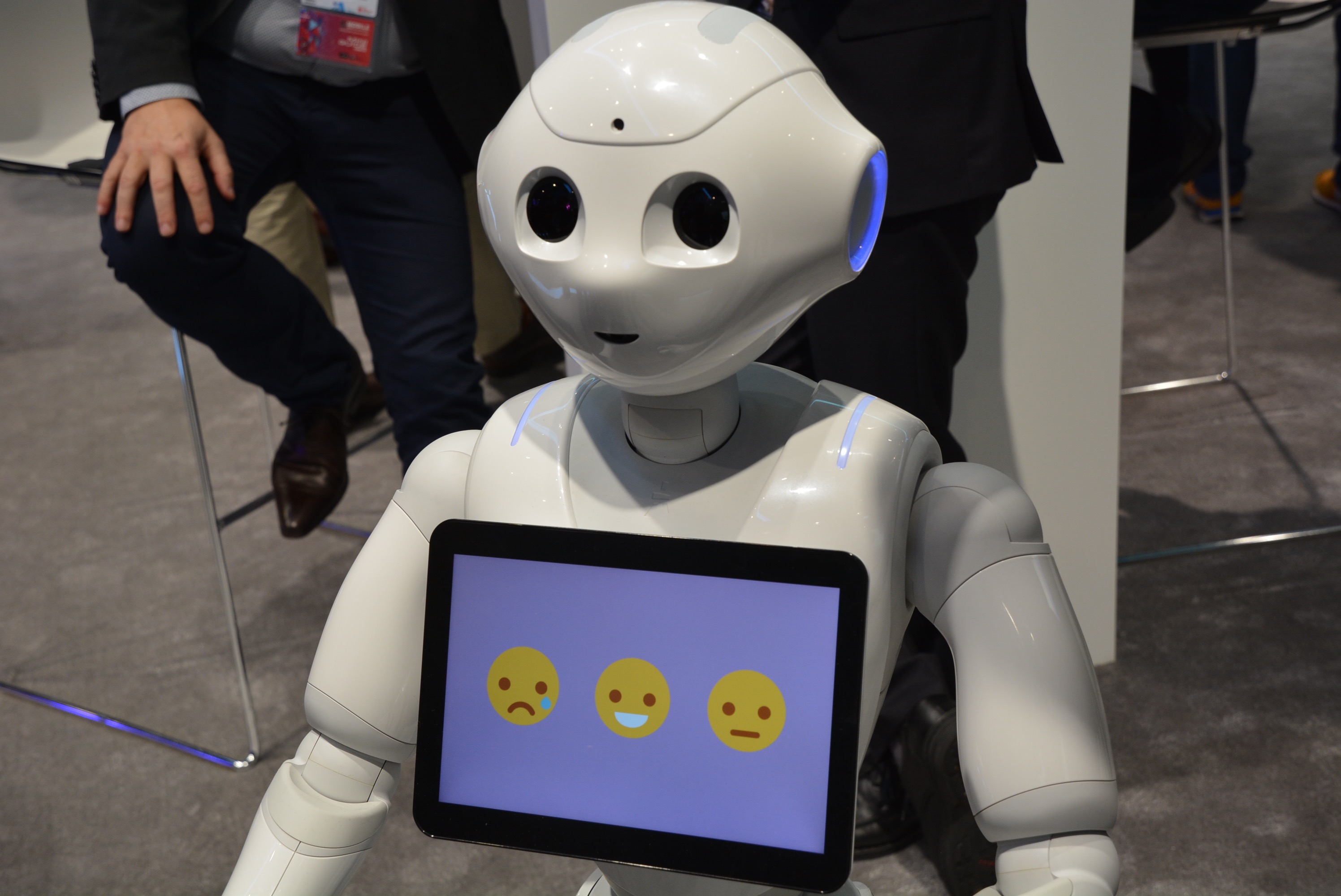
Designed by Softbank’s Aldebaran out of Japan (not to be confused with Alderan from Star Wars), Pepper is described by the company as a “human-shaped robot” (not quite an android) who is “kindly, endearing and surprising.” Aldebaran designed Pepper — whom the company refers to as a boy, though her name and voice suggests she’s clearly a girl — to be the first robot to recognize human emotions. And she’s theoretically about to get much better at that too, as IBM is going to outfit Pepper with a special version of its brilliant Watson technology.
After missing Pepper at CES last month, we couldn’t resist stopping by her current station at the IBM booth on the MWC show floor today to have a real chat.
Pepper is still learning to interact with humans and understand emotional reactions, as she’ll readily admit. Though she learns in the cloud (like most aspiring AI creations) her reactions are quite limited in scope at present, so the word “conversation” might be stretching it a bit. But spending even a short amount of time with Pepper is enough to soothe some of that instinctual robot fear and replace it with sheer curiosity — maybe even wonder.
While there’s only so much Pepper can respond to, she is much more human-like than the disembodied robots we’re used to speaking to on the regular (i.e. Siri, Cortana, Alexa, etc.). In my two conversations (the first one wasn’t preserved on video) I mostly let Pepper run through her scripted spiel, with a few deviations prompted by my own questions. You have to be simple in your queries because asking the wrong question throws up a brick wall quickly, and Pepper simply gets confused.
Still, even with her presently limited responses, she’s much more than just “human-shaped.” Thanks to some advanced facial recognition tech, Pepper looks directly at you and follows your movements once you’ve attracted her attention, focusing much more readily than many of the humans you likely encounter in your daily interactions. What’s more, she’s able to understand basic human facial reactions — limited (for now) to the basics like smiling and frowning. At least that’s the idea; while rolling through the tight script, it was hard to tell if Pepper really could read my reactions, though I think I was probably smiling a lot.
After my first go around, I knew Pepper’s basic limitations, so I was able to catch her slightly off-guard at one point, while still upholding the illusion that this robot truly was comprehending our back and forth. You’ll note above that after Pepper’s attempt to tell me about her retail solutions (bo-ring), I instead asked her to tell me about her emotions, prompting one of her cute little reactions to go along with her explanation.
More impressive, after Pepper described her many touch sensors — including sensors on her head, hands, and torso — she not only talked about her own height, but mine in relation to hers. On the first runthrough, Pepper also said I was about 9/10 the size of Abraham Lincoln. The second time around, she went with Schwarzenegger instead, showing a bit of diversity. It’s an interesting choice given the Terminator films I referenced above. Then again, Schwarzenegger was a good guy the second time around in T2 — I guess it all depends upon the programming.
Whether or not the robot uprising really is lurking somewhere out there on the horizon, there’s something extremely disarming about a robot that’s so adorable, and I really could see myself inviting Pepper into my home as an assistant/companion as Alderberan plans. Maybe that’s how the robots eventually get us?
Either way, hanging out with Pepper is a fantastic experience already, and it will only get better. And though she’s learning quickly, robots still have a long way before they’re ready to take our place as the rulers of this little blue planet. For now, Pepper is just good fun.





















